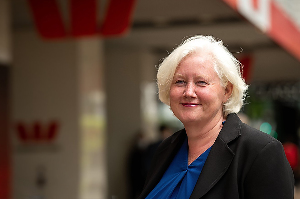
Around 25% of older households who have low retirement income and savings, but high levels of equity in their home. In general they are more likely to be older (75+), non-Māori, and no longer in paid employment.
The report says there is evidence that people are finding it difficult to downsize into smaller homes due to a lack of appropriate properties. On average these households have home equity of just over $600,000, which can potentially be released to supplement retirement income.
However, home equity release products - reverse mortgages and home reversions - are not well understood here due to the complexity and costs involved.
Retirement Commission policy lead, Dr Michelle Reyers says while NZ home equity release products appear to be costlier than in larger markets, they can provide an alternative source of income, less costly, than other forms of lending.
“The key to using home equity release products is understanding the costs and benefits and seeking financial advice to see if they are right for you,” she says.
“It’s important to understand that home equity release products have relatively high costs. For reverse mortgages it’s the interest cost. Loan balances on reverse mortgages can grow to a large amount within a short period due to the compounding effect of interest.
“People opting for a reverse mortgage should consider only using the minimum they need to supplement their monthly income rather than larger lump sum withdrawals, as this will slow the rate at which the interest owing builds up over time.”
Reverse mortgage
In NZ there are currently two reverse mortgage products on offer; from Heartland Bank and SBS Bank. Both follow the standard reverse mortgage model and are similar in design, features and costs.
The main cost is the interest, which compounds monthly and is charged using a variable rate. As of August 2024, the reverse mortgage rate at Heartland Bank and SBS Bank are 10.5% and 9.95% respectively. By comparison, floating mortgage rates are 7.99% and 8.74% respectively.
Reverse mortgage rates here are about 2.5 percentage points higher than traditional mortgage rates, similar to the margin in Australia. The level of reverse mortgage interest rates is much higher here than in other countries despite strikingly similar official cash rates and headline inflation rates. This is likely to reflect the small New Zealand market for financial products in general, says the report.
Home reversion
The NZ home reversion market didn’t exist until Lifetime Retirement Income released its Lifetime Home product earlier this year. It enables homeowners to release equity in their home by selling a percentage of interest in their home in exchange for income payments.
Unlike a reverse mortgage, it is a debt-free equity release scheme. The report says since the product is the first of its kind, little is known about its benefits and risks
Available to people aged 70 plus, It works by having the homeowner sell Lifetime a 35% interest in their home, which accrues over a 10 year period at 3.5%. In other words, Lifetime’s interest in the home begins at 0% and grows until it reaches 35% after 10 years.
The price Lifetime pays for the 35% interest in the home is 25% of the current value of the home.
There are also some upfront costs and ongoing fees; an establishment fee of 0.2% of the initial value of the home and independent costs relating to obtaining legal advice and a valuation of the home.
Ongoing fees include annual fees of 0.23% of the initial value of the home and a $1,000 fee that is introduced after ten years (which increases each year by the change in the CPI for that year).
The report says the purchasing power of the income received decreases over time due to inflation since the income received per year is fixed.
A final consideration is if people want to preserve their home equity for future generations through bequests, home equity release products will reduce that amount.
Strategic use
The Retirement Commission says despite the costs, home equity release products used strategically can provide an option for those who have no income beyond NZ Super.
“For the group of retirees relying primarily on New Zealand Super for income who have home equity but no other assets (such as KiwiSaver) to draw down, it is something to consider,” says Dr Reyers.
She says balancing whether to use some equity now but maintain the required level of equity in the home for another stage of retirement should health or life circumstances change may require professional advice.
Dr Reyers says reverse mortgages are more suited to people who do not need to preserve the equity in their home for future uses, including bequests and are less costly in low interest rate environments.
When house price growth is high; it can partially offset the impact of interest rates on the erosion of equity.
Home reversion might be more suitable in a high interest rate environment or for people who have a specific bequest motive.




Comments
No comments yet.
Sign In to add your comment